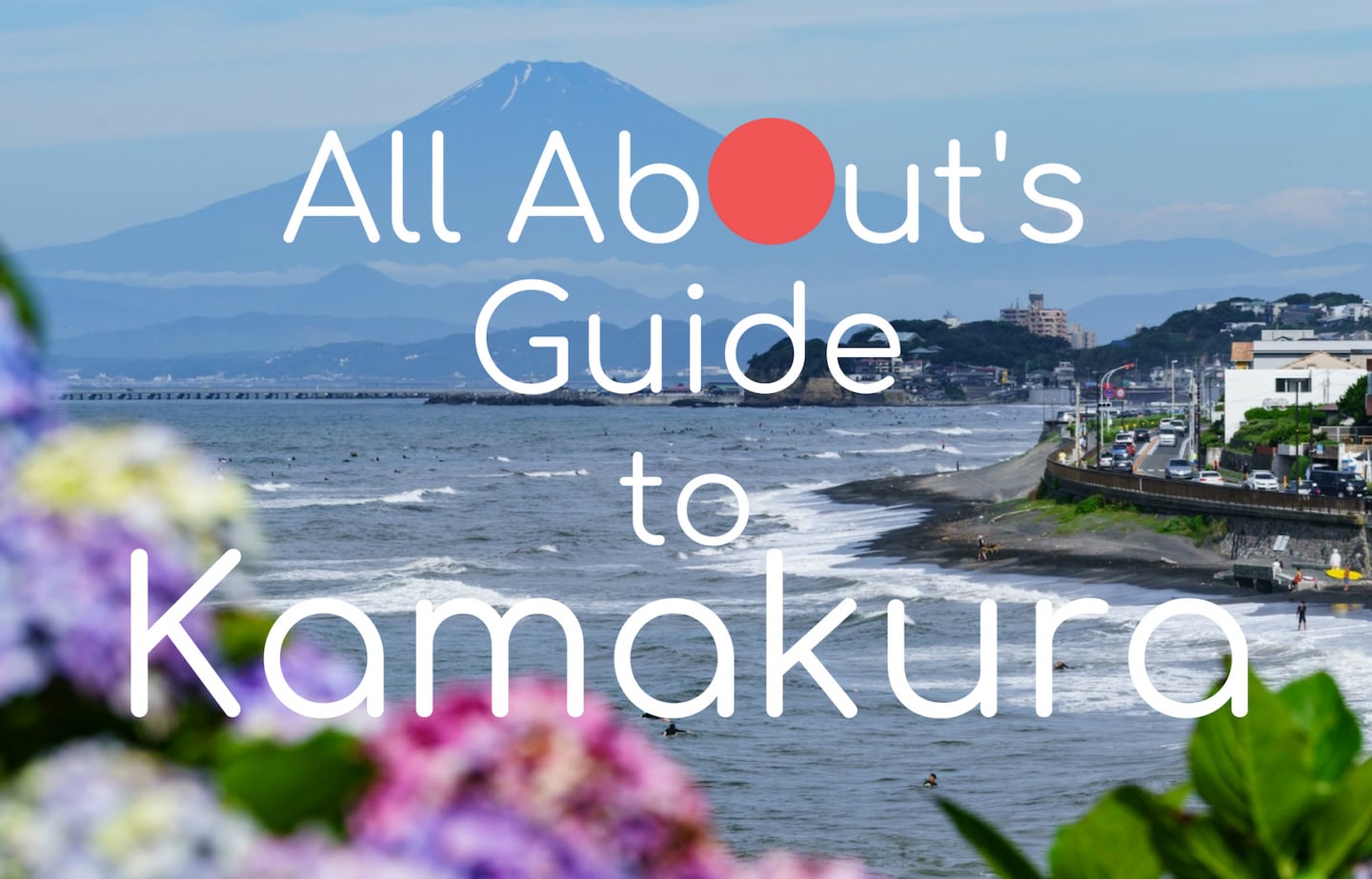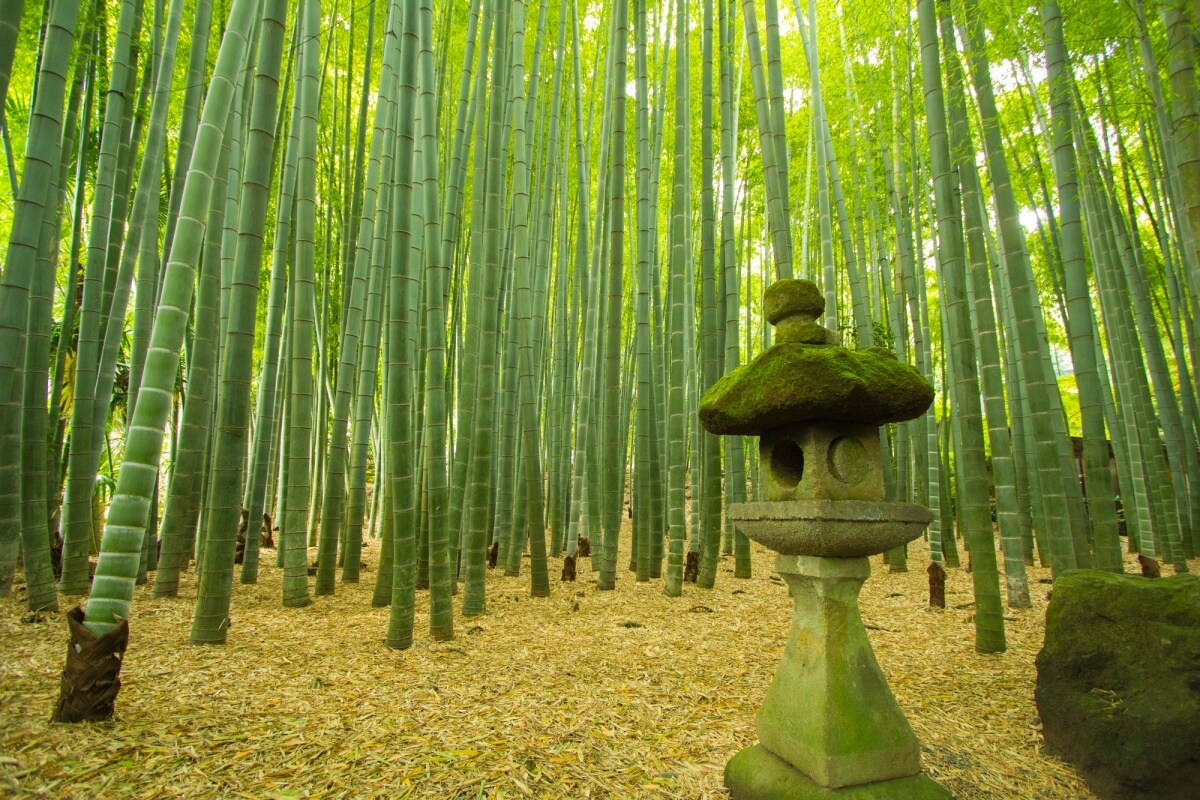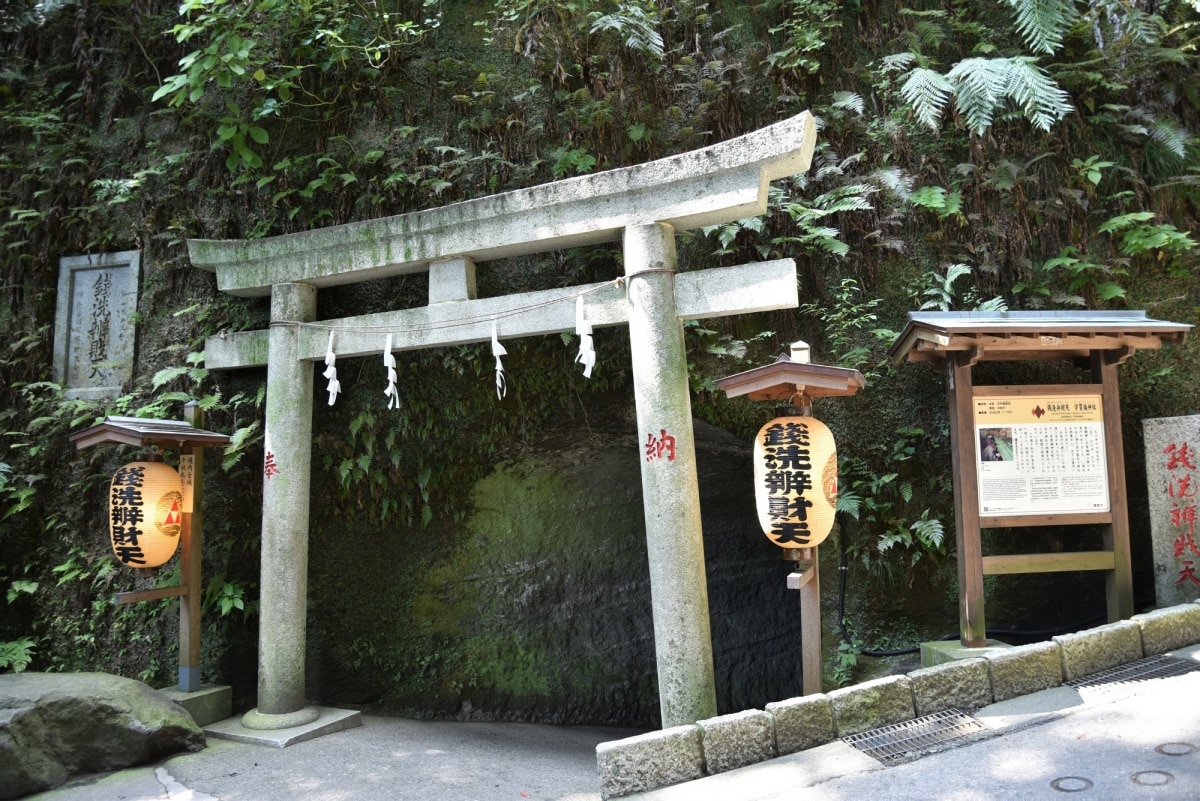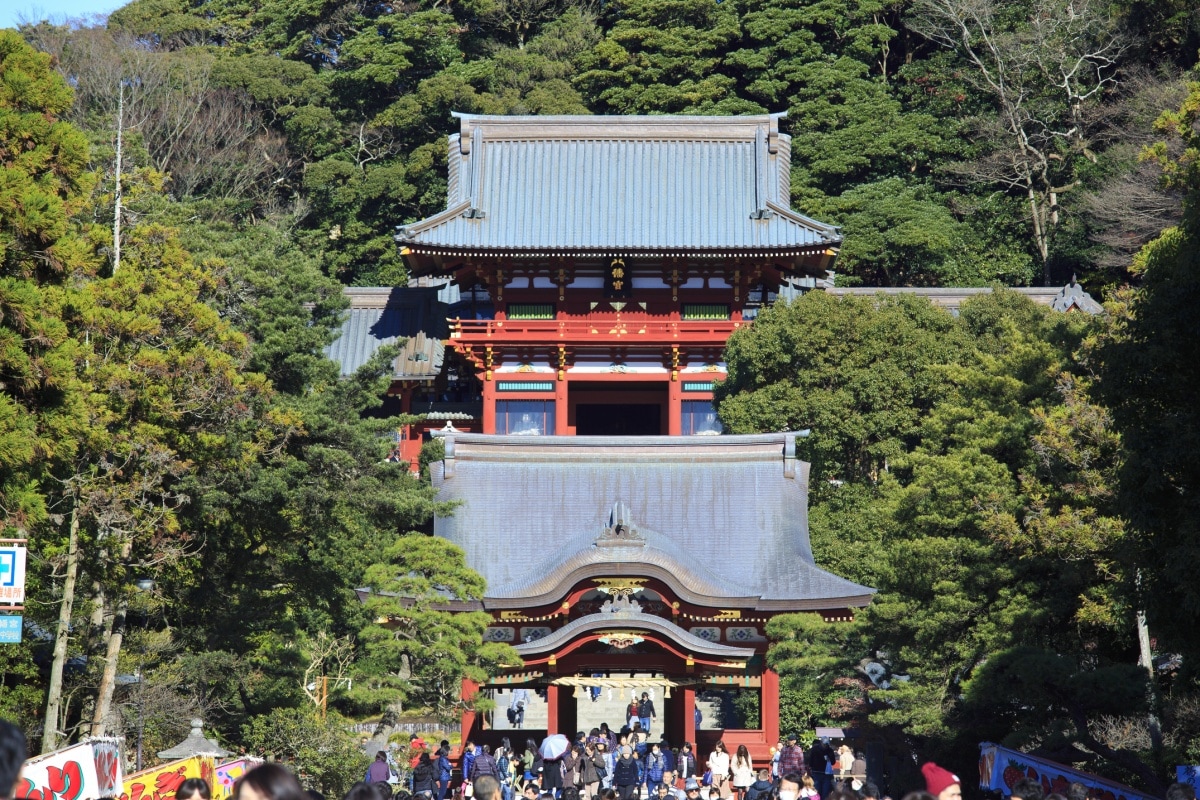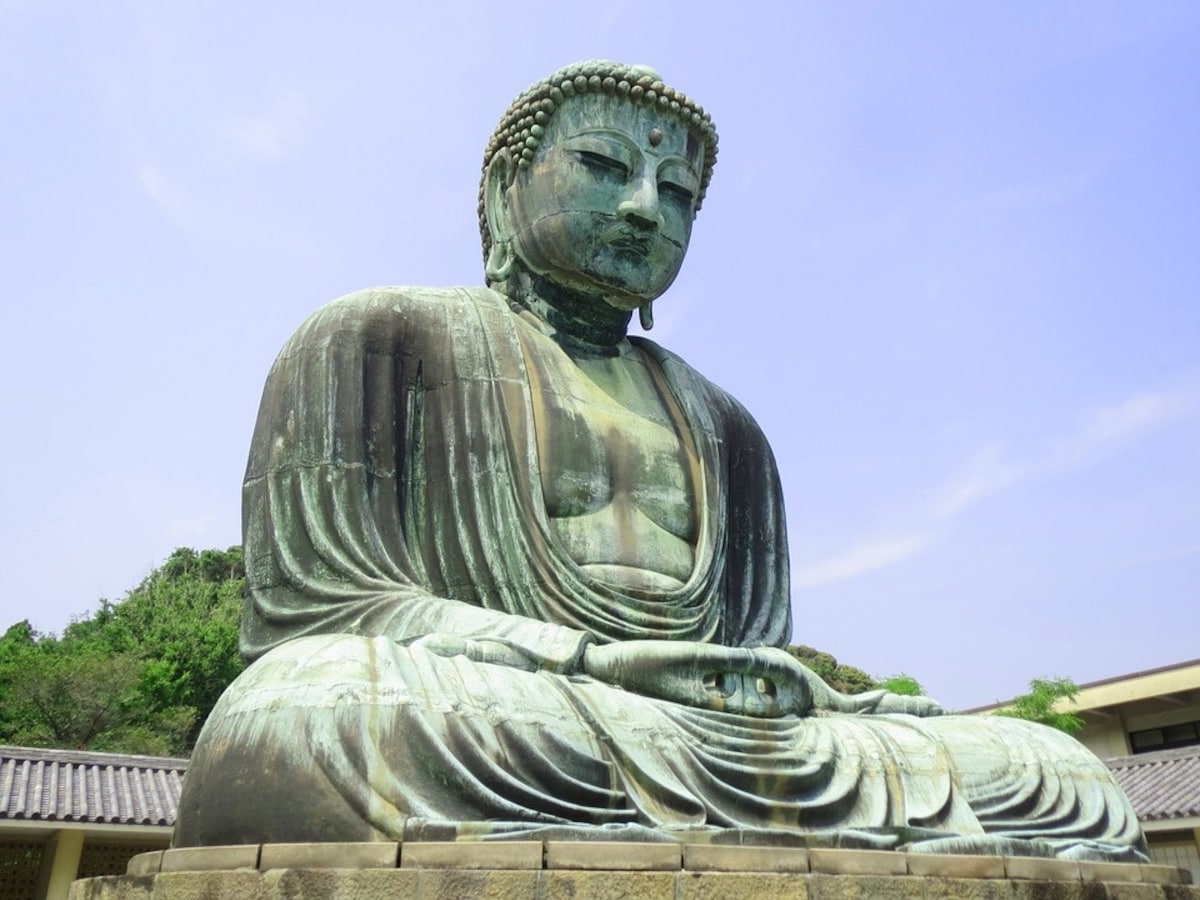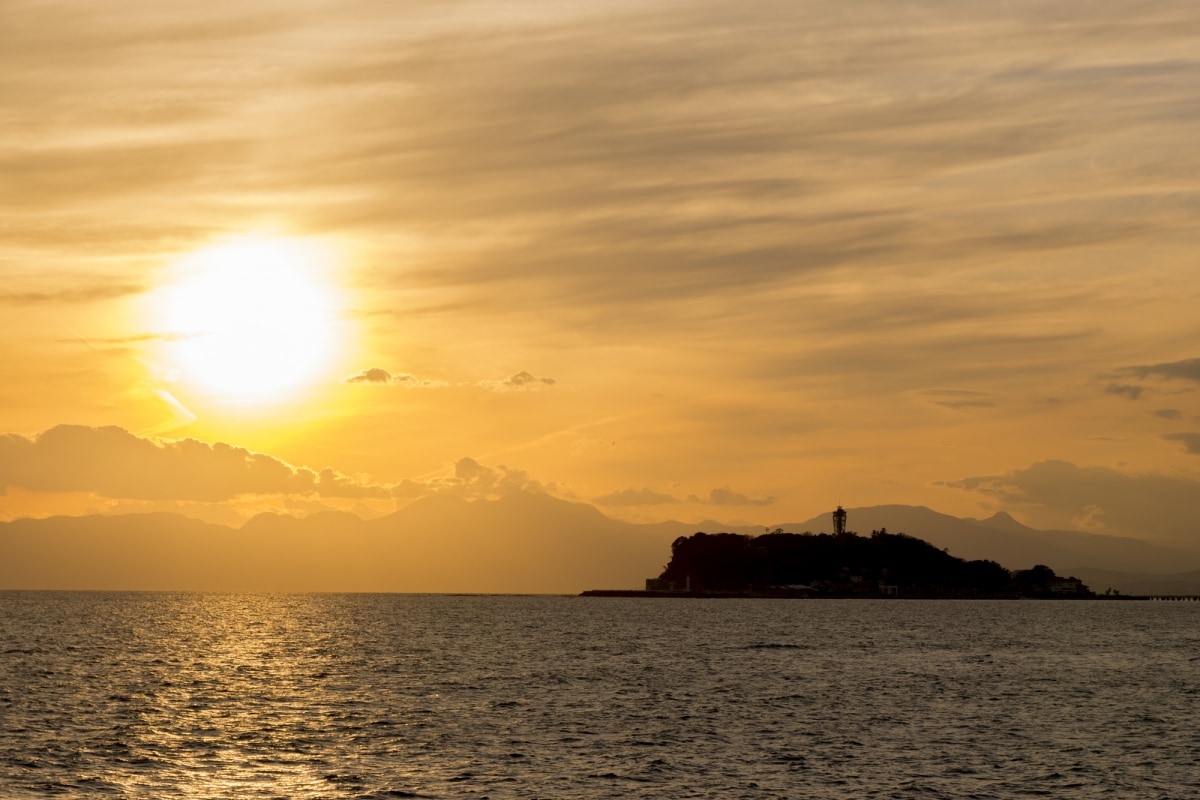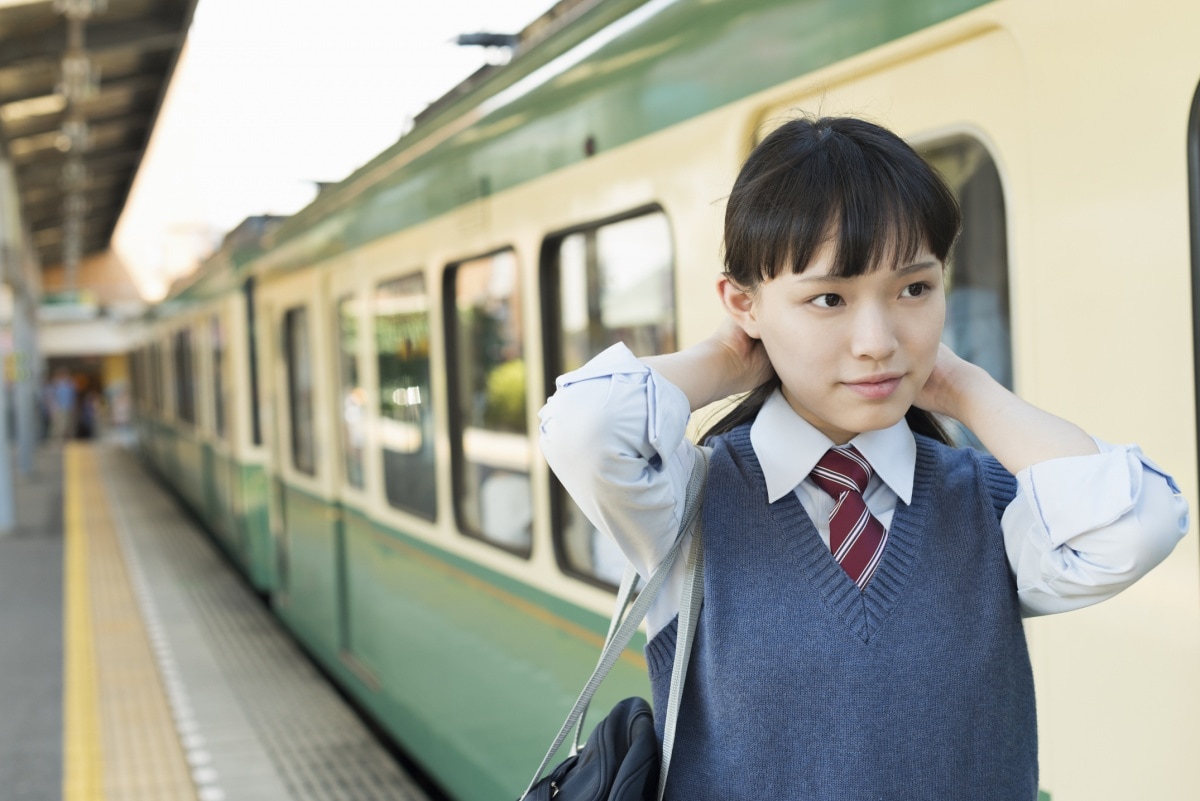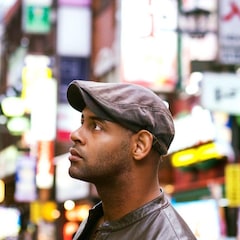All About's Guide to Kamakura
It's understandable that travelers to Japan plan to primarily explore the capital city, but we have several reasons why you should hop on an hour-long train to Kamakura for history, food, beaches and stunning views. We're here to help you plan an epic day trip, complete with info on all the hot spots and lesser-known gems, plus money-saving advice.
By Wendell T. HarrisonKey Kamakura Facts
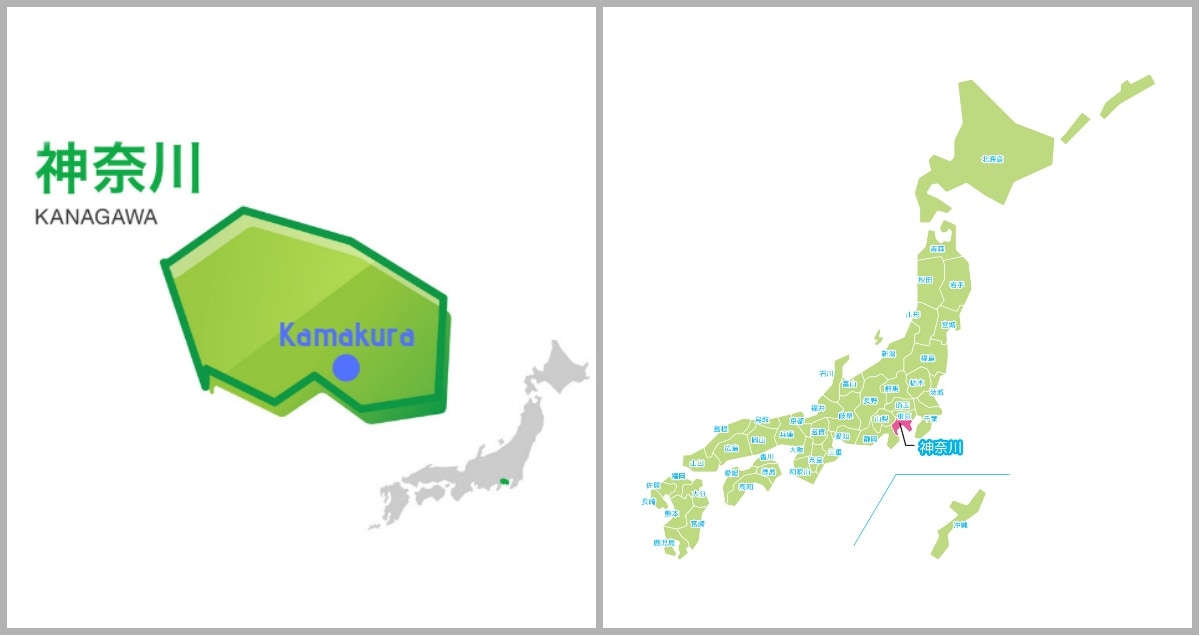
https://pixta.jp
Kamakura (鎌倉) is a small city located in the southern part of Kanagawa Prefecture, to the south of both Tokyo and Yokohama. It's quite small when compared to either of its two major metropolitan neighbors, with a population of approximately 172,000, there was a time when Kamakura was considered the political center of the nation.
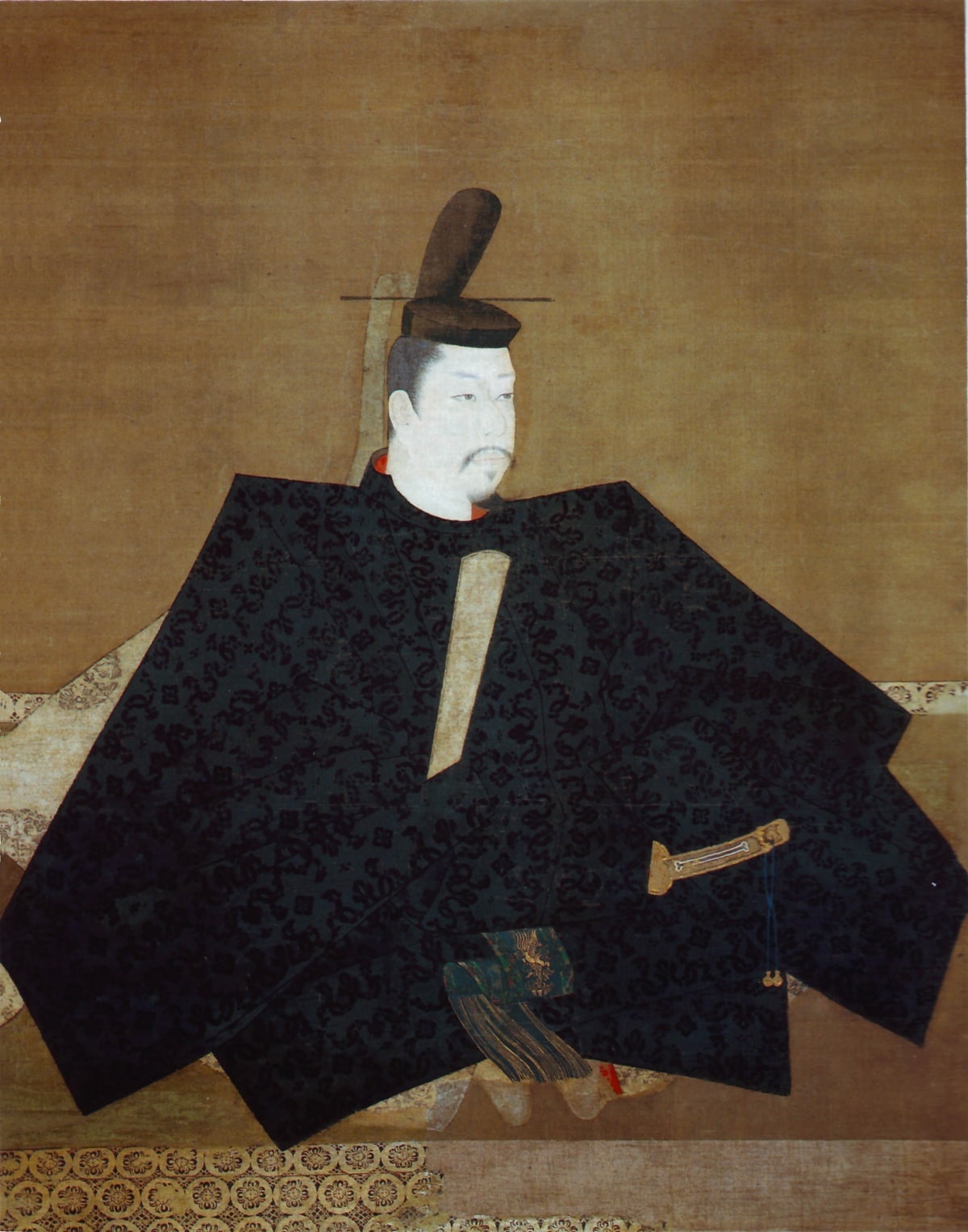
https://en.wikipedia.org/wiki/Kamakura
Though there is evidence of inhabitants in the area going back over 10,000 years (thanks to archaeologists who dated tools excavated from nearby sites), it was the founding of the Kamakura Shogunate in 1192 under the samurai Minamoto no Yoritomo that cemented its place in Japanese history.
Coming from an already powerful dynasty as one of the four most powerful clans of early Japan, Yoritomo (one of Japan's most famous samurai) established himself as Japan's first shogun, and made Kamakura his headquarters in part thanks to its natural defenses from an invasion by land. It would remain the de facto capital of Japan until 1333, after the Siege of Kamakura, when the last of the Minamoto family fell and the city was completely destroyed.
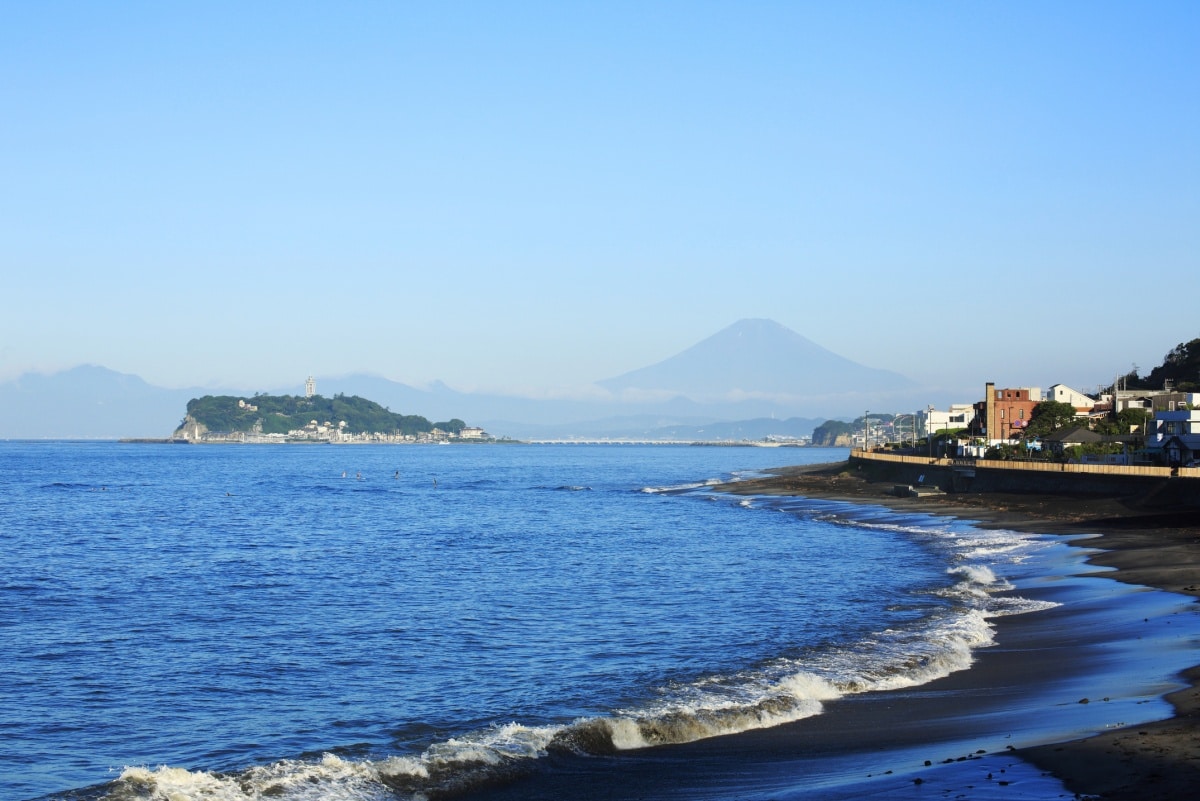
In the intervening centuries, the city did more than recover—it began to flourish as a temple town full of cultural and historic significance. These days, it's a popular vacation and sightseeing spot, especially in the fall when the leaves change color, and in summer, when Kamakura's many beaches are open for business and illuminated with dazzling fireworks. Its wealth of shrines and temples makes it a key location for hatsumode—the first visit to a temple or shrine in the New Year—and in springtime visitors flock to witness both its gorgeous cherry blossoms and displays of traditional horseback archery, yabusame.
Beyond that, it is perhaps best known for its huge Buddha statue. But there are tons of reasons to head out to Kamakura, and we're just dying to show you! Read on to find why we love this samurai city so much (or if you're already packing your bags, click here for our Top 5 Kamakura tours).
Top 5 Kamakura Sights
With so many spots that are steeped in history and culture (not to mention the gorgeous natural sights throughout the area), narrowing it down to just five is no easy task. Fortunately, many of them are quite close to each other, so exploring Kamakura even further is a breeze!
5. Hokoku-ji
One look at the "Bamboo Temple," Hokoku-ji (報国寺) and it's easy to see why people refer to Kamakura as the "Kyoto of Kanto." Here, you'll find over 2,000 bamboo stalks that dazzle when the sunlight flows between them. The temple itself is quite secluded, and the bamboo grove simply adds to the sense of tranquility. After snapping the perfect picture, meander down the narrow stone paths and enjoy a cup of matcha at the tea house on the temple grounds. Hokoku-ji is also notable for its yagura, small caves used as tombs or cenotaphs, which are believed to contain the remains of lords of the Ashikaga clan.
Hokoku-ji is open from 9 a.m. to 4 p.m. Entry into the bamboo garden costs ¥200, and tea service is an additional ¥500.
4. Hase-dera Temple
Another temple just stone's throw from the Great Buddha, be sure to stop at Hase-dera (長谷寺), affectionately known as the "Flower Temple." Like most of the country, it's especially lovely in the spring when the cherry blossoms soften the scenery scenery. But the real draw here are the hydrangeas, which outlast the blooming sakura and cover the area in hues of blues, pinks and purples that have to be seen to be believed.
The other important reason to visit Hase-dera is to see the remarkable eleven-headed wooden statue of Kannon, the Buddhist Goddess of Mercy. Standing at 9.18 meters (about 30 feet), this is one of the largest in Japan, and listed as an Important Cultural Property. Next to the main hall is the Kannon Museum, which contains many of the temple's treasures. There's also an observation platform nearby, which offers a breathtaking view of the Miura Peninsula on a clear day. Hase-dera is also a great place to take a break, since they have a restaurant, a café and a gift shop.
Hase-dera is open from 8 a.m. to 5 p.m. from March to September, and until 4:30 p.m. from October to February. The admission fee is ¥300, plus an additional ¥200 for the Kannon Museum.
3. Zeniarai Benten Shrine
Zeniarai Benten Shrine (銭洗弁天) was also founded by Minomoto no Yoritomo, and these days it's a great example of the ancient fusion of Buddhism and Shintoism, which were legally separated by the government during the Meiji Period (1868-1912). Several cultures have superstitions surrounding money (specifically how to get more of it), and one such belief throughout Japan involves washing it (which is the literally meaning of zeniarai)! Dipping your cash and coins in the sacred waters of the shrine may or may not provide you with financial fortune, but at least your cash will be cleaner—bringing a whole new meaning to the term money laundering. Furthermore, fans of the Legend of Zelda video game series will definitely recognize the Triforce pattern, which is the kamon (or family crest) of the Hojo clan, the family of Minamoto no Yoritomo's wife, Masako.
The shrine is open from 8 a.m. to 4:30 p.m., and admission is free! It's about a 25-minute walk from Kamakura Station. The best way to get there is by taking the scenic hiking trail near Kotoku-in, which ends right near Zeniarai Benten Shrine.
2. Tsurugaoka Hachiman-gu Shrine
Tsurugaoka Hachiman-gu (鶴岡八幡宮) is another major site you simply must visit when in Kamakura. In fact, it’s considered Kamakura’s premiere place of worship, and you’ll definitely experience this popularity if you visit on New Years’ Day, when approximately 2.5 million people come here to receive blessings for the upcoming year.
While the shrine was moved to its current location in 1191 by Minamoto no Yoritomo, it was originally built in 1063 by his ancestor, Minomoto no Yoriyoshi, to honor Hachiman, the god of the warriors and their noble code. The shrine is a short walk away from Kamakura Station and has several points of interest. Climbing up the tall staircase will bring you to the main hall, which also houses a museum. Just in front of the main hall is a performance stage. If you’re lucky, you may see a musical performance, a theatrical production or a wedding ceremony, which is fairly common. You may also join in one of the several annual festivals that bring lots of vendors to the entrance of the shrine. Spring is an especially nice time to visit, since the shrine is home to cherry blossoms, peonies, wisterias and more. Be sure to take a picture in front of the huge torii gate that leads to Komachidori, Kamakura's major shopping street. You can’t miss it!
Tsurugaoka Hachiman-gu is open from 5 a.m. to 8:30 p.m. from April to September, and from 6 a.m. from October to March. During the New Year's holiday from January 1 to 3, it is open 24-hours to accommodate the sheer volume of visitors it receives.
While the grounds are free to enter, the museum has an entrance fee of ¥200.
1. Great Buddha
Without question, the number one reason why travelers head to Kamakura is to see the famed Great Buddha, known as the Daibutsu (大仏) in Japanese. The very first incarnation of this colossal figure was a wooden statue, but it was replaced in 1252 by a bronze statue (that has surely fared a lot better than the obliterated wooden one did). While it was originally contained indoors, the building was destroyed by earthquakes and tsunamis, leaving the big Buddha to be at one with nature in 1498. Named a National Treasure, the Daibutsu stands at a height of about 13 meters (nearly 43 feet!), and weighs about 121 tons!
The Great Buddha is housed at Kotoku-in (高徳院), a beautiful temple with picturesque gardens, and the path leading up to it is lined with some really cool shops for tourists and locals alike. Have a snack, shop for some souvenirs or ninja gear replicas, and grab some of the delicious ice cream that is prevalent in this area. In 2010, US President Barack Obama dropped by to see the Buddha and eat matcha ice cream, reliving a childhood memory from when he was six years old. Locals at the time sold swirls of vanilla and green tea soft serve ice cream affectionately nicknamed "Oba-matcha," a delightful portmanteau and a delectable dessert.
Kotoku-in is open from 8 a.m. to 5:30 p.m (or 5 p.m. from October to March)., and costs ¥200 to enter. It's also worth noting that the Daibutsu himself is so big that visitors can enter, and for a mere ¥20 at that! The lines can sometimes be a bit long, and the last entry is at 4:30 p.m., so it's best to arrive early.
Enoshima
While Enoshima (江ノ島) is an island that is considered sacred to Benten, aforementioned goddess of fortune and wisdom, its sandy shores and spectacular views of Mount Fuji are open to all visitors. Just off the coast a little west of Kamakura, this resort area calls itself home to Enoshima Sea Candle—a lighthouse and observatory built in 2003—and its adjacent gardens, as well as the fabled "Love Bell," which is said to bring good luck to couples. There's a series of caves to explore, the various shrines that are collectively known as Enoshima Shrine, the Enoshima Aquarium and even a luxury spa for relaxation. Given Enoshima's proximity to Mount Fuji, on clear days you can witness a truly marvelous sunset from almost all of these locations. We highly recommend picking up the Enoshima One-Day Pass to save some money when you visit.
Enoshima is especially easy to get to from both Kamakura and Tokyo. There's the Enoden (Enoshima Electric Railway) Line or the Shonan Monorail, both of which run between Kamakura and Enoshima. Or you can hop on an Odakyu Line train direct to Katase-Enoshima Station, which runs all the way from Shinjuku Station.
There's also a tour boat that drops passengers off at the rear of the island, which we will discuss further below.
Off the Beaten Track
Even though Kamakura is a very popular sightseeing destination, there are still plenty of little places nearby that are well worth exploring.
A Mecca for "Slam Dunk!" Aficionados
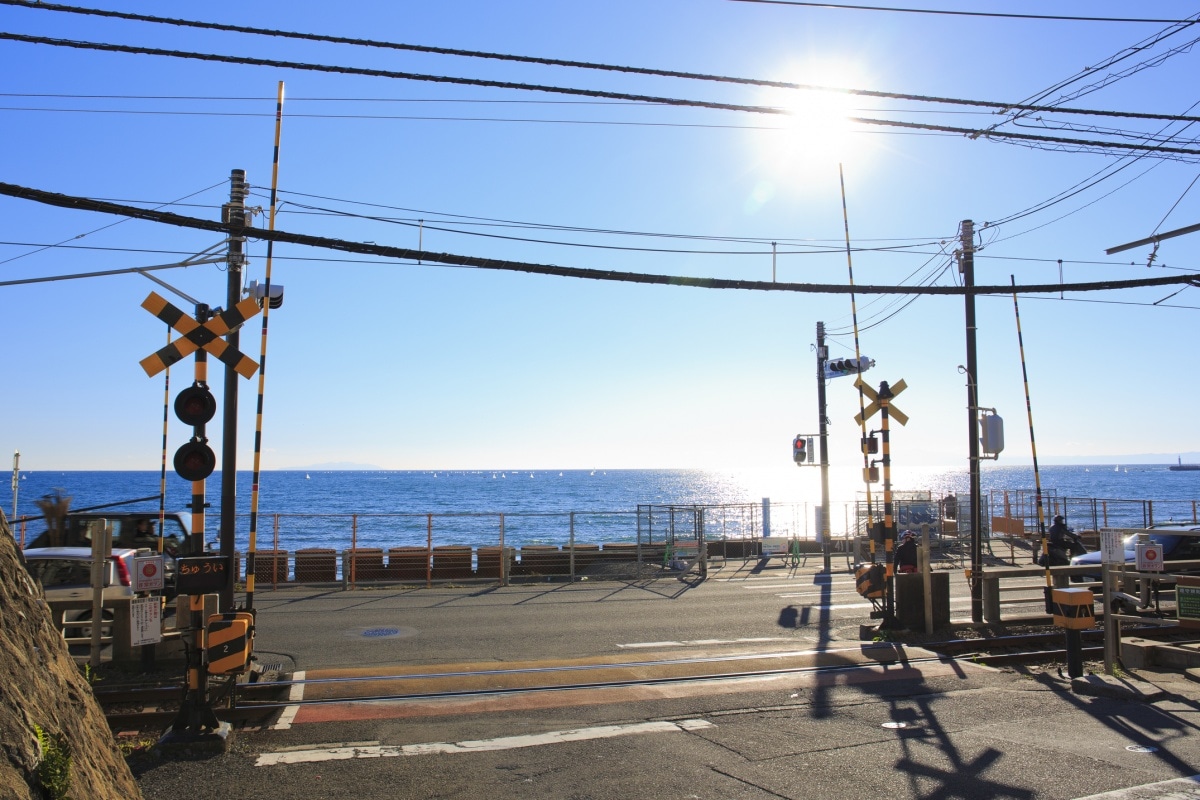
Fans of the wildly popular anime series Slam Dunk! will definitely know this shot, as they flock to Kamakura Kokomae Station to see it in person. This station is on the rustic (and previously mentioned) Enoden Line that connects Kamakura to Fujisawa. Kamakura Kokomae literally means "in front of Kamakura High School," but be aware that the school is (understandably) off-limits to visitors.
Boat Trip & Iwaya Caves
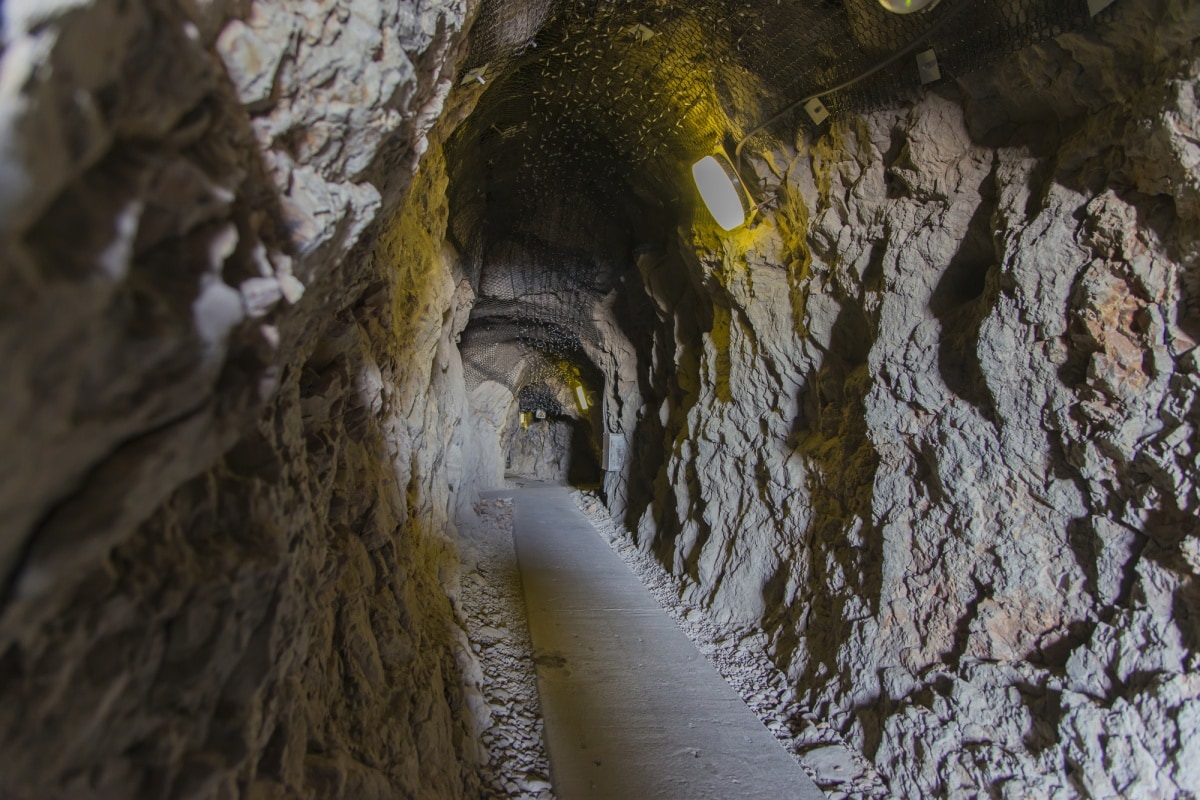
https://pixta.jp
While you can walk to Enoshima easily using the picturesque bridge that connects the island to the mainland, if you really want to explore the area, take a Bentenmaru boat instead. This short and inexpensive trip (¥400 for adults) will take you to the west side of the island, where you can easily access the Iwaya Caves. After exploring the caves (which is even cheaper with a day pass, and is recommended for any Kamakura and Enoshima tour), make the trek up to the top of the island for a gorgeous panoramic view from the summit. It's especially amazing at sunset!
Mandarado Yagura
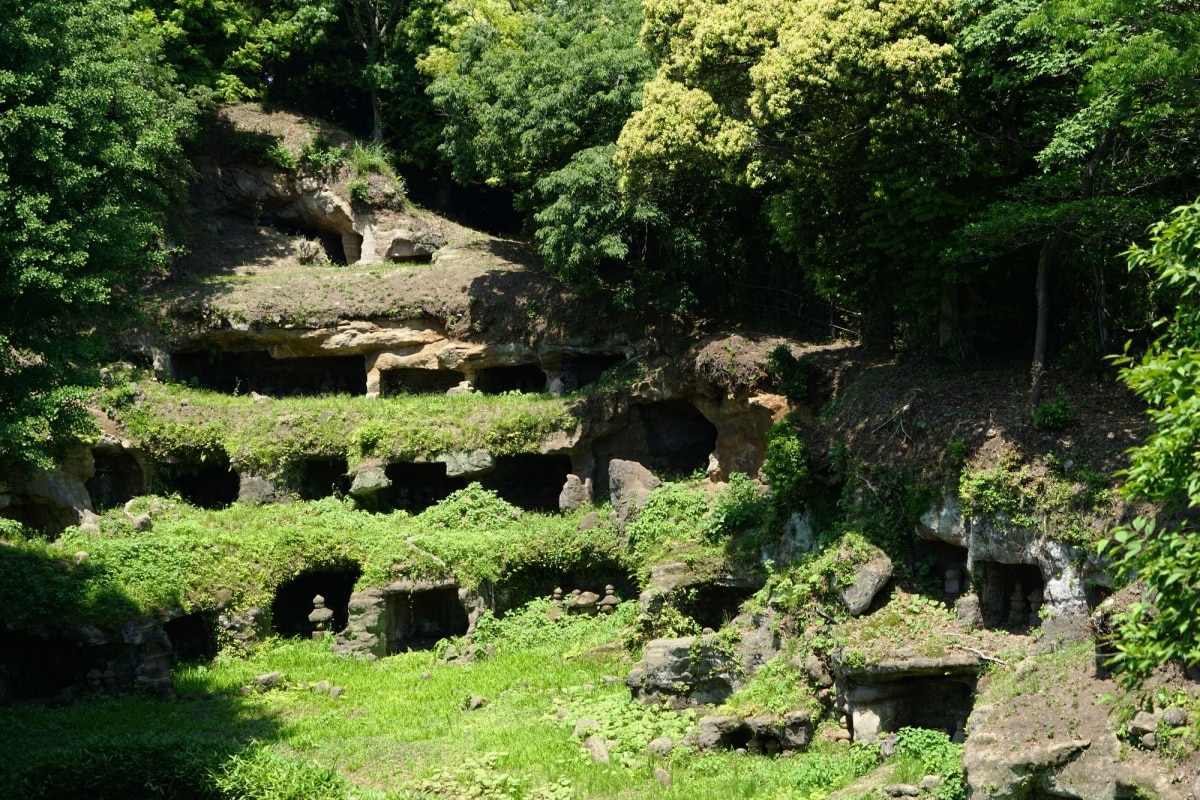
https://pixta.jp
If you're a history buff, this former city of samurai is has a secret you cannot miss. The Mandarado Yagura isn't exactly easy to find, but this burial site for high-ranked soldiers is a must-see if you're interested in the Kamakura Period. As mentioned earlier, yagura are artificial caves that house the remains of samurai—as well as esteemed merchants and priests—and the ones in Kamakura are among the largest in Japan.
The Beaches
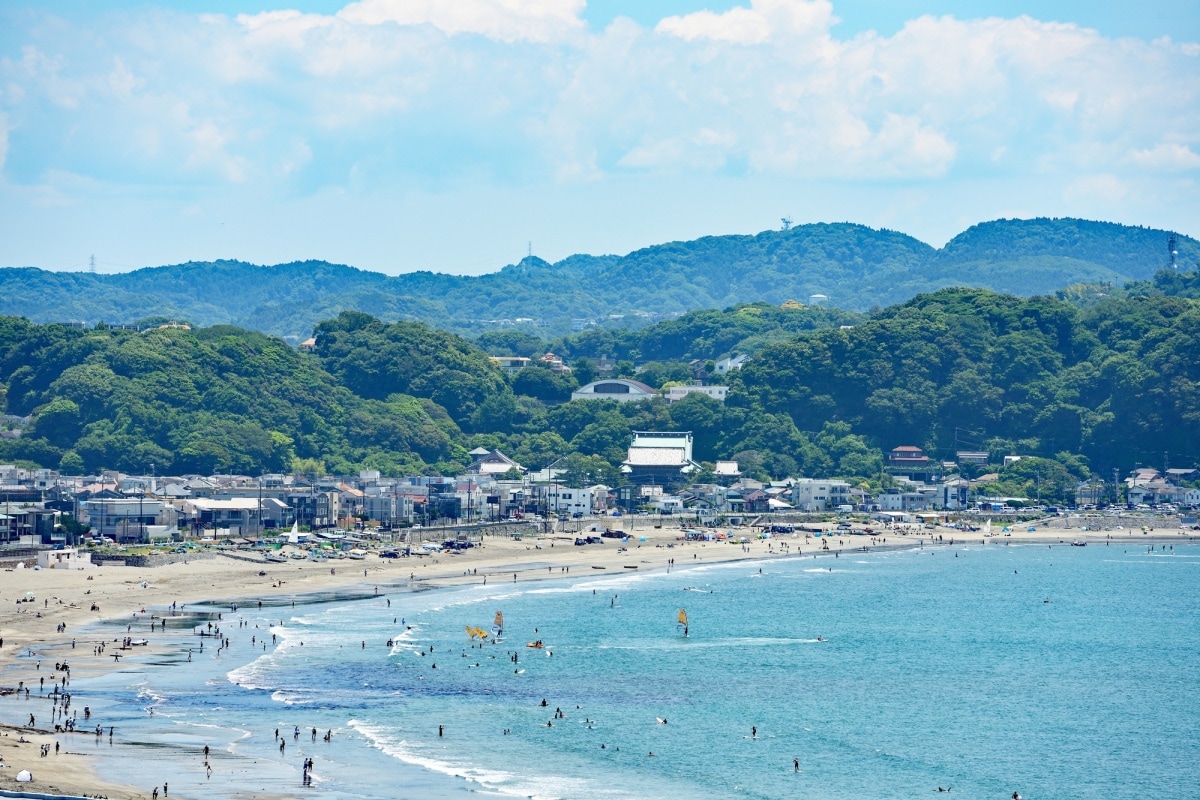
https://pixta.jp
Kamakura is without a doubt an amazing place to learn about Japanese history. However, it's also known for its beaches, which are some of the closest to Tokyo. In the summer, there are lots of festivals and events that bring the beach bunnies together, but there are several areas for family fun at Yuigahama Beach. You can also enjoy the great views and marine sports from Inamuragasaki or the beer garden at the Koshigoe Shore.
Top 5 Must-Eats in Kamakura
Exploring all of Kamakura's sights is sure to work up an appetite. Fortunately, there are plenty of delicious regional specialties that are sure to satisfy!
5. Shirasu
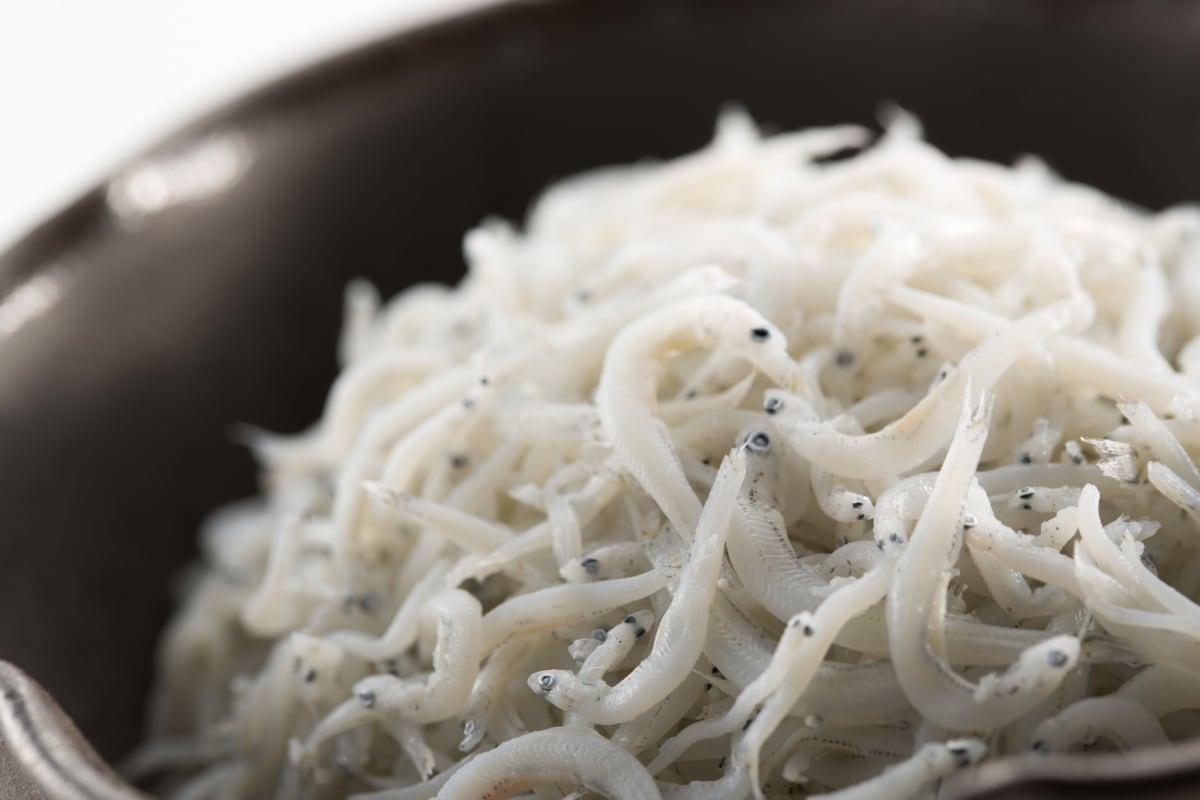
If there could be only one defining representative of popular local foods in Kamakura and Enoshima, the reigning champion is most definitely shirasu. Known as "whitebait" in English, shirasu are young fish that have yet to develop scales and fins. Shirasu can be easily found all over the region, especially as a rice bowl, but some unique dishes you'll find in Kamakura include shirasu ice cream or pasta, and you'll even see it used as a hamburger topping!
4. Shojin Ryori
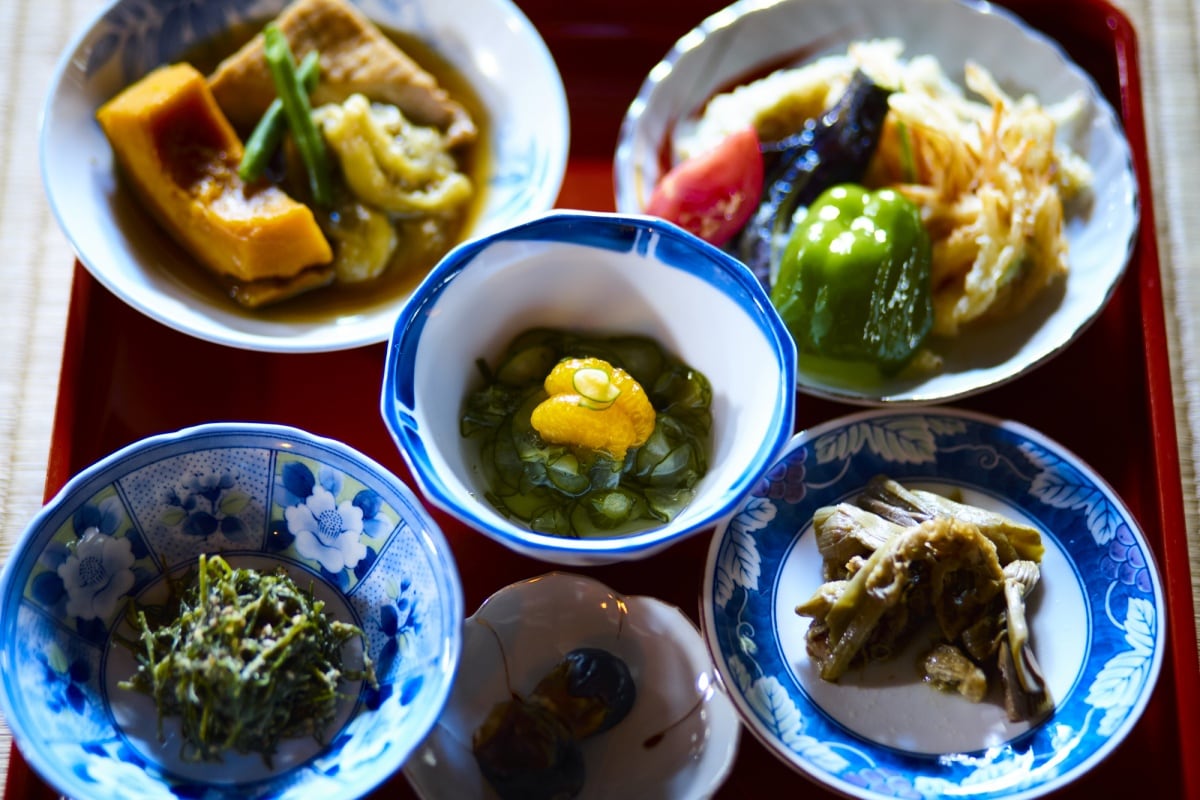
https://pixta.jp
Shojin ryori is traditional Buddhist cuisine that can be found throughout the country. Generally speaking, Japan can be a difficult place to dine out for people who have certain dietary restrictions. However, if you can find a restaurant that serves traditional Buddhist cuisine, vegetarians can rest assured that their food will contain no animal byproducts. Kamakura is home to one of the best of those restaurants, a place called Hachinoki. We highly recommend the sesame "tofu," which is made from kudzu (arrowroot) starch instead of soybeans.
We also recommend that those with stricter dietary needs inform the staff at least one day in advance, that way the restaurant can ensure a comfortable and delicious dining experience.
3. Tako Senbei
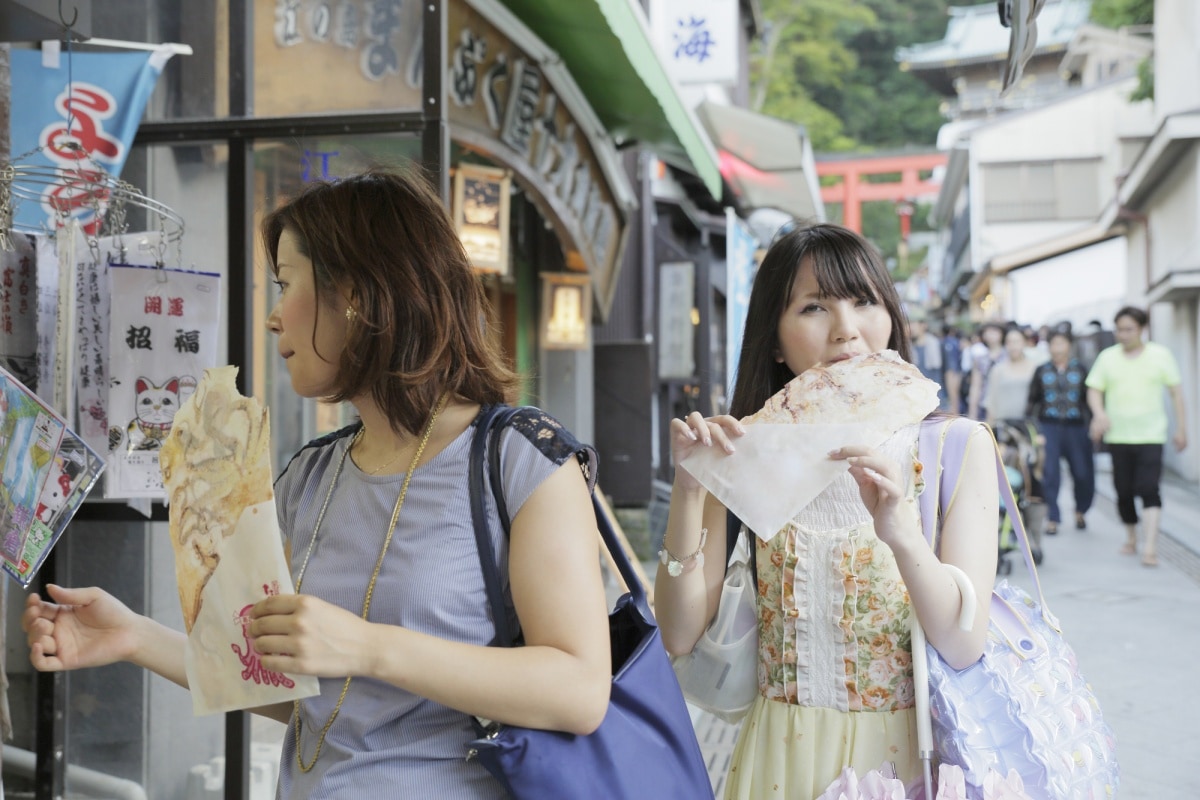
https://pixta.jp
Senbe are ubiquitous throughout Japan, but this delicious street food you'll see in Kamakura and Enoshima is a bit different. The long, thin rice crackers (tako senbei) have a tantalizing surprise—the tentacles! A fun mix of crispy and chewy, locals and visitors alike line up at Asahi-Honten, one of the most popular spots to pick up this snack. Grab one to munch on as you explore Enoshima's sunny shores.
2. Ice Cream & Gelato
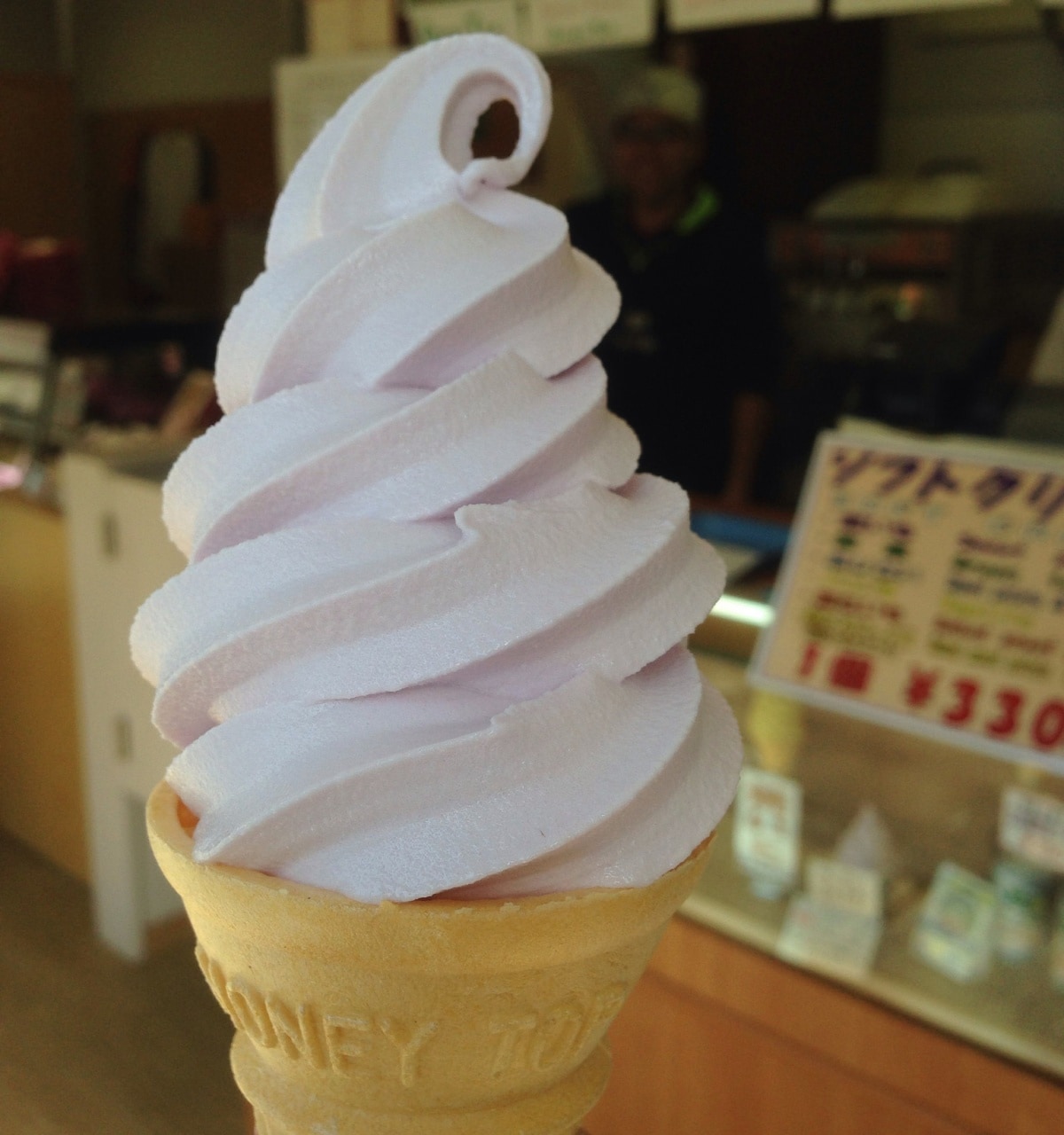
https://www.flickr.com/photos/bryansjs/13748213435
It would be a miracle if you could walk from Kamakura Station to Hachiman-gu and not consider getting a cheeky cone of ice cream. While we talked about green tea ice cream above, one of the most popular flavors you'll find is murasaki imo, or purple sweet potato. However, among all the soft-serve selections you'll also find gelato—yes, the real deal! Il Brigante is a shop that was founded by Emiliano Vommaro, who brought his gelato-making skills from Italy. Get there early before the rare flavors like Olive Oil Affogato are all gone.
1. Hato Sabure
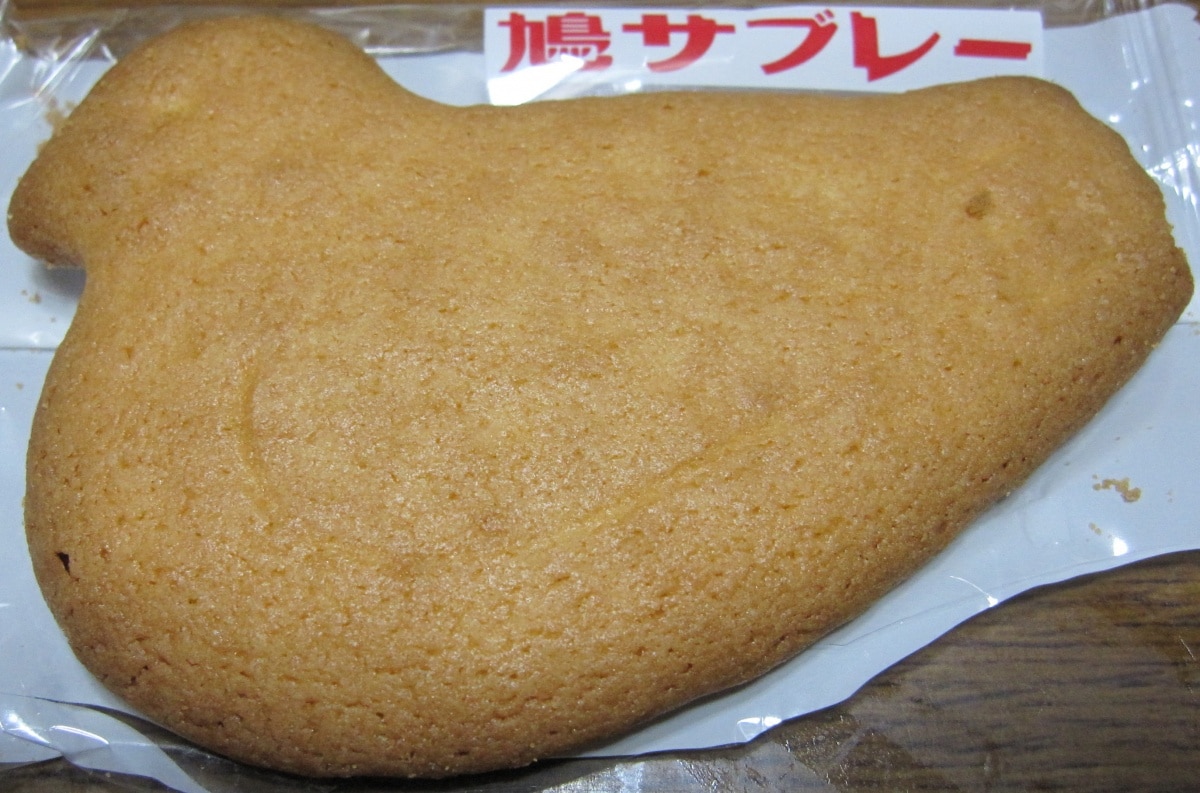
https://ja.wikipedia.org/wiki/%E9%B3%A9%E3%82%B5%E3%83%96%E3%83%AC%E3%83%BC
As Kanagawa Prefecture's most popular souvenir, you can't pass up a chance to buy some Hato Sabure. These buttery cookies are crafted in the shape of pigeons, or hato in Japanese. Though these birdies have flown all over the country, your friends and family will be disappointed if you don't bring any of these treats back.
How to Get Around Kamakura
One great feature of touring Kamakura is that much of it can be enjoyed on foot! If you're up for hoofing it, you can head right to Tsurugaoka Hachiman-gu from Kamakura Station's East Gate before checking out a few other nearby sites. Furthermore, buses and taxis are in abundance near the station. Use these to get to places slightly further out, like Hokoku-ji and Zeniarai.
However, if you really want to experience the glory of Kamakura, you'll need to hop on the Enoden, a retro electric railway that began running in 1902 and is still in service. Along the track, which has 15 stops, you'll pass through neighborhoods, get a glimpse of the beachside and (If you're lucky) catch a peek of Mount Fuji. Many of the hotspots of the area can be accessed along this line, including Hase Temple, Great Buddha and popular beaches like Inamuragasaki and Yuigahama.
Of course, exploring Kamakura can be done on the cheap by obtaining a day pass! The two major rail companies in Kamakura, JR and Odakyu, both offer travel passes: the JR Kamakura-Enoshima Pass (¥700 for adults) and Odakyu's Enoshima-Kamakura Freepass (¥1,470). The latter pass can even be used from Shinjuku Station, and includes a round-trip ticket to Kamakura, unlimited rides on the local Odakyu Line and Enoden once you get to Kamakura, as well as special discounts on attractions and shops in the area.
How to Get to Kamakura
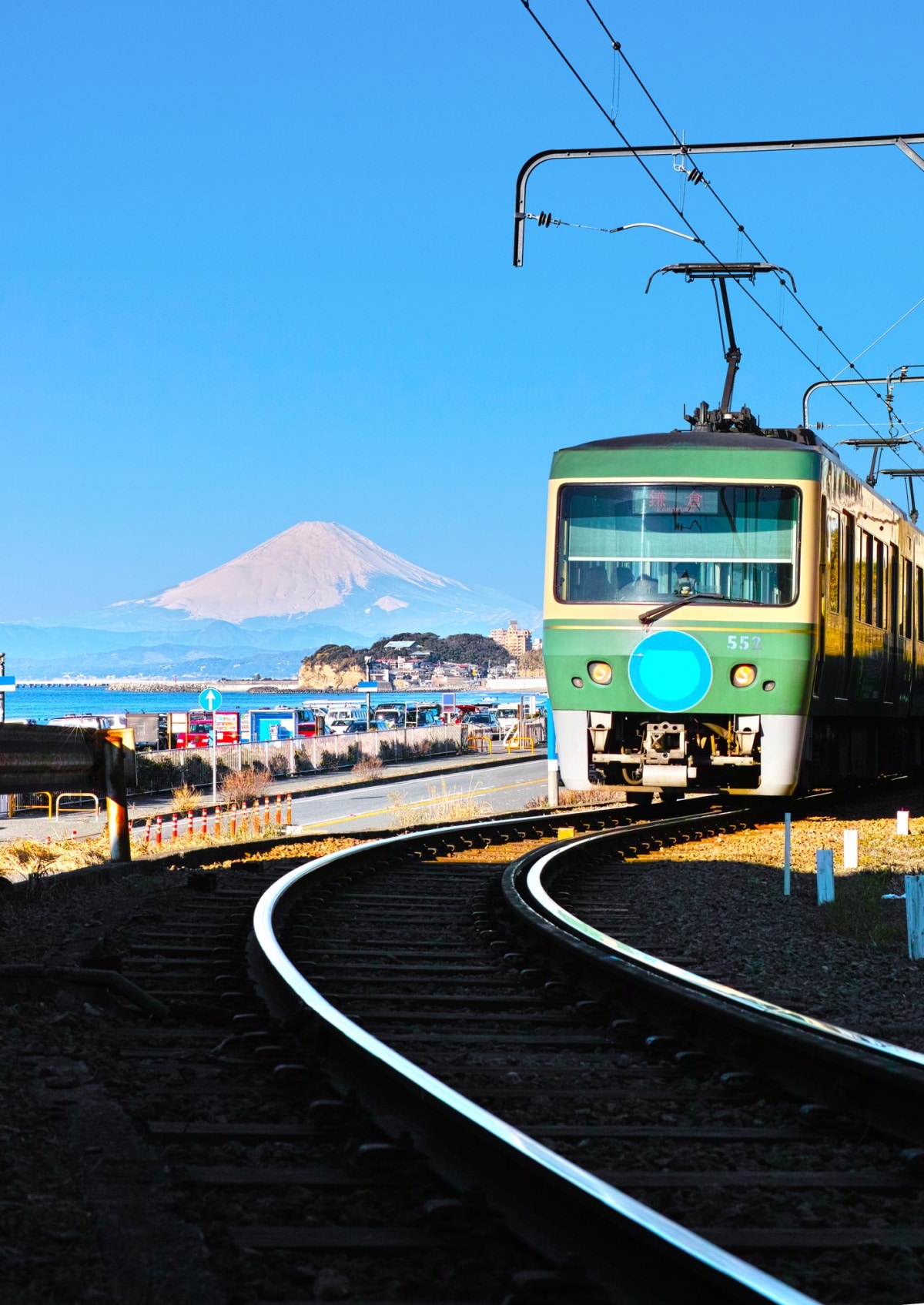
https://pixta.jp
By Train
Only 50 kilometers (about 31 miles) from Tokyo, getting to Kamakura is pretty easy from the metropolis or neighboring Yokohama. Using the JR Line, you'll need to hop on the Yokosuka Line, which passes through Tokyo, Shinjuku, Shibuya and Yokohama Stations, or the Shonan-Shinjuku Line. Furthermore, you can also take the Odakyu Line, which operates from Shinjuku Station. From Tokyo, the trip will take about an hour or more, and can cost around ¥1,000.
By Shinkansen
Coming from other areas of Japan, you'll want to use the Tokaido Shinkansen to get to Shin-Yokohama Station and then hop on the Yokohama Line before changing to the Shonan-Shinjuku Line. Driving to the city from Tokyo is also a possibility.
From Haneda Airport
If flying into Haneda, there's the Keikyu Airport Limousine that will bring you directly to Kamakura. But they can be a little infrequent, so it may be easier to use trains or to take a taxi.
Kamakura Local Tips
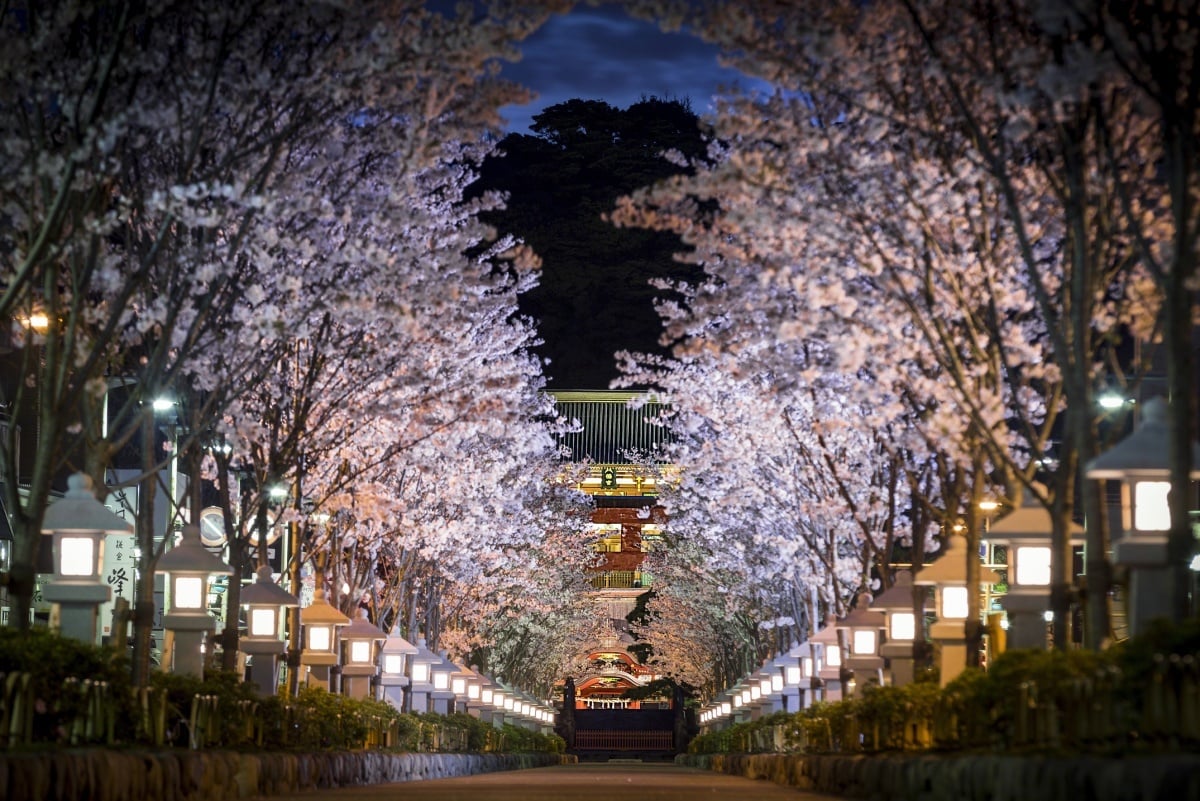
1. Although we didn't really mention it, Kamakura and Enoshima are both great places to enjoy water sports. Even if you hit the beach early, it's very common to see beach bums with surfing gear, wind or kite surfing beyond the boundaries of the beach. Many beaches have facilities for renting different equipment, both for water activities and relaxation.
2. If you're going to spend a day on the beach, be sure to brush up on your beach etiquette. Be aware that both Kamakura and Enoshima are very popular since they're so close to Tokyo, and can get quite crowded.
3. Kamakura is a wonderful place to enjoy a hike, especially when the leaves are changing colors in the fall. It doesn't happen often, but the shrines and temples are also very beautiful when covered in snow.
4. Komachidori is a great place to spend time for those who are little temple or shrine'd out. Beyond tons of different dining options, there are lots of local crafts and souvenir shops too.


